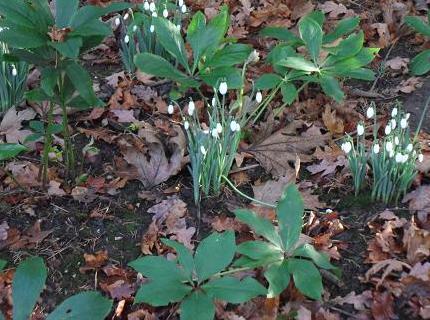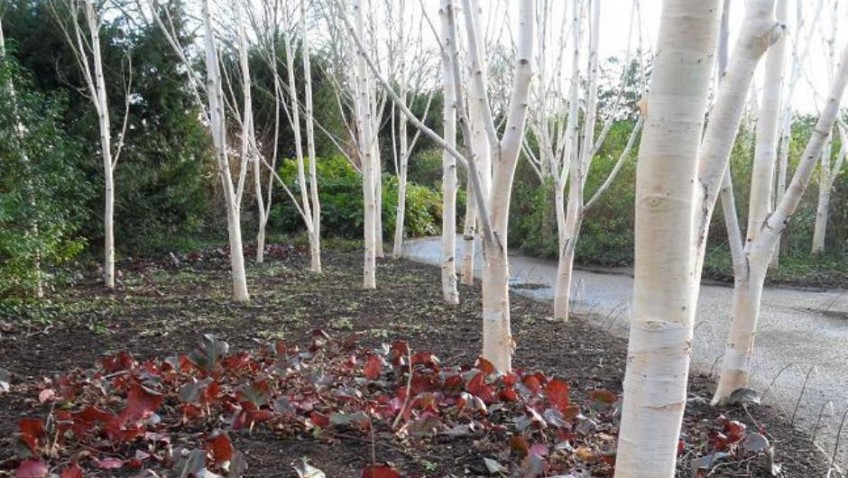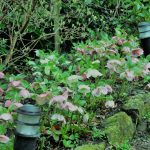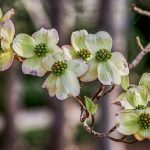Hello and welcome to Green Arts. I am a gardener in South East London and I love my job. All the gardens I tend, some of which have been decades in the making, belong to people who care a lot for their gardens.
I also teach horticulture, something else I really enjoy and, here again, I often come across people who are as passionate about the green arts as I am.
A couple of years ago I made up my mind to try and get as much as I possibly could out of the British winter and I have to say that there are some magnificent winter gardens to visit for ideas and inspiration and even just simply to enjoy.
If you thought England was a place of green and brown between November and April then think on. Late winter, in my view, is probably the best time to visit a winter garden – when the previous season’s glories have faded and before the spring bulbs emerge.
I wonder how many of you will recognise the garden where I took the picture of the gleaming white trees underplanted with thick burgundy leaves (name those plants anyone?) around this time last year – do let Mature Times know if you think you do. I took it on a visit to my favourite winter garden. Small clue – it isn’t in London, but it is in the south of the country.
 Flowers are not the only stars of the garden. There is colour to be found in leaves, twigs, berries and bark and don’t forget texture which always adds visual interest.
Flowers are not the only stars of the garden. There is colour to be found in leaves, twigs, berries and bark and don’t forget texture which always adds visual interest.
We may not be sitting about relaxing in the late winter garden but it is good to gaze out of the window and know you’ll be out there again in a couple of months.
Your winter show pieces are best sited so as to be visible from your windows so that you can appreciate them to the full.
During the months of the year when you are always outside it is only too easy to forget the all-important winter view from the house – try to keep it in mind as you plan your garden this year. The gardens of stately homes created in the past always had sections especially designed to be viewed from the windows.
Looking good in my garden now are the Sarcococcas – I have S. ruscifolia with red berries and S. confusa with black berries; both of these have small, glossy, oval, very dark green leaves that are excellent for cutting for floral displays.
S. humilis has very different foliage from the other two, long and narrow leaves that aren’t particularly shiny and presents an attractive contrast. All three have wonderfully scented flowers and, because these are so tiny, it is amazing how strong that scent is. Perhaps not so amazing really because insignificant flowers need to attract pollinators too and so they use a different but forceful advertisement.
I used to have the S. ruscifolia in a tub by the front door where it gave out a wonderful perfume as you came in and out around Christmas time. Then it grew to a size that meant I had to transplant it out into open ground.
Top tip: If you don’t desperately need to plug a gap in the garden and so need to buy a good sized shrub it can be cost effective to buy shrubs in small sizes and use them first as fillers for your containers and window boxes.
They grow at the same time and, then when they are too big you transplant them into the ground. In this way you can widen your scope for plants in containers and re-stock your garden later.
Every garden should have Hellebores. Helleborus ‘White Beauty’ is a favourite. Plant in moist soil in dappled shade and it will reward you with white to cream flowers from January to April. For the rest of the time this hardy perennial sports attractively marbled elegant evergreen leaves. they look great interspersed with snowdrops at this time of year.
Tip: in the autumn or late winter be sure to remove all the blackened, soggy leaves that spoil the show and are a feature of Hellebores.
The Dogwoods (Cornus) and the Willows (Salix) are well-known for providing winter twig colour. Although I have a small garden I have planted Salix alba ‘Britzensis’ for its magnificent twigs with colour grading from pale orange to deep flame at the tips.
I like being able to see the mass of warm colour at this time of year. It could grow into a 25 metre high tree which clearly I don’t want so need to prune it each year but I did chose it for height because, as I said before, I want to view it from the window and the height makes it more visible.
I have two which I am increasing from cuttings each year. (Salix cuttings are very easy to do) and am looking to three or maybe five depending on space. Displays like these need to be underplanted with compatible small plants to avoid weeds taking hold – I have used a small Euphorbia but perennial grasses also look good.
Try and make space for a winter garden you can see from the house. I can recommend it. Happy gardening!
by Rosanna Cavallo




